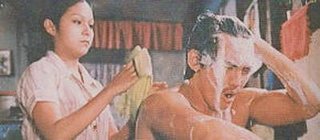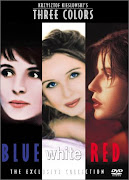DISPLACEMENT doesn't need distance. It's an urban commonplace where estrangement and enmity happen with the frequency of a fire alarm or the screaming siren of an ambulance. Here's a reprint from my latest opinion column in Sun.Star Cebu (29 August 2006 issue): Crash HoursThank the heavens we’re no planets, or we’d be on a collision course more often than we hear prophets of doom about the world’s end.
Crash HoursThank the heavens we’re no planets, or we’d be on a collision course more often than we hear prophets of doom about the world’s end.
Long before scientists bumped off Pluto from the planetary clique, and whittled it down to size as merely a “dwarf planet,” our own world has been getting smaller. To the level of the trivial goes our trite tendency for turf wars and clan rivalries, after all. As if we were aliens among ourselves hardwired for each other’s invasion.
Why, here this side of the equator, even a parking space becomes a battleground. Or so it seems to the son of Cebu’s governor and the chief of the Criminal Investigation and Intelligence Bureau (CIIB) who were in the mood for Star Wars in front of the entrance of an uptown bar one recent night.
Hotheads of the world, unite; you have nothing to lose but your cool.
True, it’s getting cramped in here up to a choking point, and spitting fire comes breezy where there’s barely a breathing space for a handshake. We’d never run out of bones for each other’s contention, and going to the dogs seems to be the only way to push borders, if not to stretch our threshold of tolerance or patience.
Finding a place or even a day unbroken by the usual outbreak of hostility looks like a blind wager while astronomers now get more elbow room to redefine and render obsolete our notion of the solar system.
Talk about finding a place under the sun, and we might as well cover ourselves against ultra-violent rays with newspapers perennially stifling and blood-stewing from the prerequisites of conflict. Space is of the essence, but that sounds as esoteric as astral travel where there are hardly public places to sit down awhile under a tree and to let the ill wind stirring in one’s head to scatter in the manner of dry leaves.
Space is of the essence, but that sounds as esoteric as astral travel where there are hardly public places to sit down awhile under a tree and to let the ill wind stirring in one’s head to scatter in the manner of dry leaves.
If looking for a parking space gets as dizzy as steering one’s way out of labyrinths, as motorists can attest, finding a park could be the fastest way to reach a dead end. Or, to rub elbows with lovers, licit or otherwise, whose threadbare intimacy and privacy are frayed at the edges by the invasion of the city’s derelicts and perverts bracing for their prey.
Spaced-out. That’s what one intuits while loitering through the heart of the metro where the homeless, beggars, and vendors might as well have raised their stakes in the sidewalks and overpasses. The bottleneck, clearly, is not only down the road where rage goes with the exhaust fumes.
Getting into each other’s way, unlike planets in their respective orbits, there’s plenty of time and lot of space only for breathing smoke down each other’s necks.
 C ited as one of the "Best 100 Films in the World" by the Museum of Tolerance (Los Angeles, USA) , Lino Brocka's Bona highlights the hapless plight of film archiving in the Philippines. Sadly, the country holds no copy of this gem of a film which has been acclaimed in various international film festivals like Cannes and Torino. There's hope, however, that the present generation would still have the chance to see it.
C ited as one of the "Best 100 Films in the World" by the Museum of Tolerance (Los Angeles, USA) , Lino Brocka's Bona highlights the hapless plight of film archiving in the Philippines. Sadly, the country holds no copy of this gem of a film which has been acclaimed in various international film festivals like Cannes and Torino. There's hope, however, that the present generation would still have the chance to see it.
From a recent private screening of Bona, Ateneo professor and anthropologist Tito Valiente takes a second look at one of the most celebrated Filipino films (shown in 1980) in his recent column in Business Mirror (3 August 2006). Here goes the reprint:Native Returns At the lobby of Studio 1 of ABS-CBN, a table draped in a wide swath of cloth cradled flowers. Around it were posters of a film copied from old newspapers. A man in business clothes was standing still beside one of the photos. That was the closest they could get near the horizon of a person called Nora Aunor. That night, a copy of Bona, the movie produced by Aunor and directed by Lino Brocka was going to be screened, the copy provided by Cinematheque Française, a film institution in France that archives excellent cinema. (Bona will have its cable television premiere in the Sunday Cine Premiere block of Cinema One on August 20 at 8 pm.)
 As with the other guests filing in, people were there with similar purposes. There were the young cineastes who may have read the reviews of Bona in various film journals and web sites and blogs, for Bona is one of the most dissected Filipino films. These people may have cited the film as one of their favorite works even if they had not seen it previous to this evening. The sheer presence of the film in the minds and essays of writers and critics was enough to convince them that they were dealing with a work that was benchmarked and graded according to accepted international aesthetics. But there were also middle-aged men moving as one, looking like pilgrims about to approach the inner sanctum of the shrine. They were so quiet that you could feel through their movements the grace of many a Nora Aunor cinematic outings. These are people who could utter word for word, grand inflection for grand inflection, the dialogues that their idol—in the sense of worship and reverence—gave voice to on the silver screen.
As with the other guests filing in, people were there with similar purposes. There were the young cineastes who may have read the reviews of Bona in various film journals and web sites and blogs, for Bona is one of the most dissected Filipino films. These people may have cited the film as one of their favorite works even if they had not seen it previous to this evening. The sheer presence of the film in the minds and essays of writers and critics was enough to convince them that they were dealing with a work that was benchmarked and graded according to accepted international aesthetics. But there were also middle-aged men moving as one, looking like pilgrims about to approach the inner sanctum of the shrine. They were so quiet that you could feel through their movements the grace of many a Nora Aunor cinematic outings. These are people who could utter word for word, grand inflection for grand inflection, the dialogues that their idol—in the sense of worship and reverence—gave voice to on the silver screen.
It was not merely a voice coming from a body. Nora’s voice in many films, including those that were sinfully trivial and fun, slithered and sauntered out of the screen and into the domain of the popular, the populist, the political. The lines, as well as the characters, from which those meanings sprung transcended the instrument of cinema and became part of the collective yearnings of a mass audience who saw in Aunor not just an actor but someone equipped with a divining rod that could trace the fault lines of a group of people even as it would direct them to the wellspring of their neurosis and salvation. Aunor’s much-documented celebrity was going to go through a reassessment that night, to check if the books—and essays and poetry—written about her icon were really truthful valuation of her person and her genius and not simply the ranting of academics trying out new theories about popular culture.
Seated as I was at the orchestra, surrounded by fans, I could sense the undertow of nervousness in those faces upturned to the screen; there was also sadness and longing. Most of the people there, I believe, were perched at the edge of their seats, the gurgling in their hearts pushing them almost to the edge of a sweetly welcomed nervous breakdown. Again that night, some simply ceased to be film viewers and moved on to be witnesses of an apparition.
A history of tastes
 The metaphor of the sacred, the discourse of power, and the narrative of dispossession apply to the audiences of Bona as well as to the film.
The metaphor of the sacred, the discourse of power, and the narrative of dispossession apply to the audiences of Bona as well as to the film.
The film opens with the male-dominated procession of the Black Nazarene of Quiapo. Men are throwing their shirts and towels onto the carriage of the Christ icon, to be wiped against the body of the icon. Then the face of Aunor, as Bona, is shown, lost in the crowd, but not lost in the ritual. The next scenes bring us to what preoccupies Bona (other than a religion in display). She is seduced by another faith, as she displays to us an almost reverential and awe-stricken admiration for a bit-player, Gardo. Critics use the word “obsession” to process the relationship that brings Bona to Gardo. But viewing the film again gives us other words. Like irrationality. Like lust and love.
You know, of course, the story. How, one night, Gardo comes home and tells Bona that he is leaving for abroad, and she should just go home. Then how Bona looks at the boiling pot of water. And the rest is cinematic history. Part of this history is that Bona the film and Aunor as Bona have become guideposts for the evolution of film-viewing and re-viewing in the Philippines. Go and run to the nearest library and catch the writeups of that period, when Bona was first screened commercially, and you will see how so much of the appreciation of the film went beyond and behind the cinema.
 Reporters then wrote how Aunor had to produce the film to convince people that she could act. And yet, Bona was produced in 1980, a full three years after Aunor thundered through the screen in Tatlong Taong Walang Diyos, and went on to win the Urian for Best Actress that year.
Reporters then wrote how Aunor had to produce the film to convince people that she could act. And yet, Bona was produced in 1980, a full three years after Aunor thundered through the screen in Tatlong Taong Walang Diyos, and went on to win the Urian for Best Actress that year.
The screening answers many questions but also opens up many more. Given how the screenplay displays an almost reckless disregard for coherence, one could ask now if Brocka really enjoyed Aunor in the film. The film looks like it is meant to showcase another talent, that of Phillip Salvador, thus bringing some critics to describe the film as his film. One could even wonder why Brocka and the writer chose a bit player as the object of Bona’s adoration. This preoccupation with Salvador, however, becomes the bane of the movie.
At the end, Bona is indeed Nora Aunor’s work. Bona is Aunor looking, with a bit of melodrama and masochism, how she, an unknown, has become the object of many people’s adoration, the actor becoming the icon.
 The power of the tragedienne/icon in Aunor is that she is able to weave a character into a full functioning tapestry of nerves and magic. Even then, you cannot blame those who genuflect before her when they cite the many gems in Bona. There is Aunor running away from her father, the speed of her escape as frantic and funny as it was demented. Aunor looking from the fence into her home where the wake for her father is taking place, fear and love and anxiety etched in a shot that merely shows one half of her face. Aunor peeking from the kitchen, tension personified, the rigid figure melting into the loneliest of embraces with her mother, played with brittle tenderness by Rustica Carpio. Then, there is that scene—when she throws the boiling caldron of water onto Gardo’s body, the wretchedness on her face a troubling chemistry of dementia and despair, and a rage that seems to travel from her scarred soul, in a nuanced form that only Aunor could summon.
The power of the tragedienne/icon in Aunor is that she is able to weave a character into a full functioning tapestry of nerves and magic. Even then, you cannot blame those who genuflect before her when they cite the many gems in Bona. There is Aunor running away from her father, the speed of her escape as frantic and funny as it was demented. Aunor looking from the fence into her home where the wake for her father is taking place, fear and love and anxiety etched in a shot that merely shows one half of her face. Aunor peeking from the kitchen, tension personified, the rigid figure melting into the loneliest of embraces with her mother, played with brittle tenderness by Rustica Carpio. Then, there is that scene—when she throws the boiling caldron of water onto Gardo’s body, the wretchedness on her face a troubling chemistry of dementia and despair, and a rage that seems to travel from her scarred soul, in a nuanced form that only Aunor could summon.
You can look for more, but at the end, there is one lesson: Nora Aunor is second to none and no one follows after her. Not yet, anyway. I knew this when I stepped out of the Studio One into the lobby once more. The table that held the flowers was shrouded in black, more like in mourning for the passing of good films that we used to make, and for an actor like Aunor, whose genius might as well be dead in our dreary landscape of commercialism and bad taste.*** Photos culled from the blogs of Willi Pascual and Jojo de Vera as well as the archive of the International Circle of Online Noranians (ICON) e-group.































































